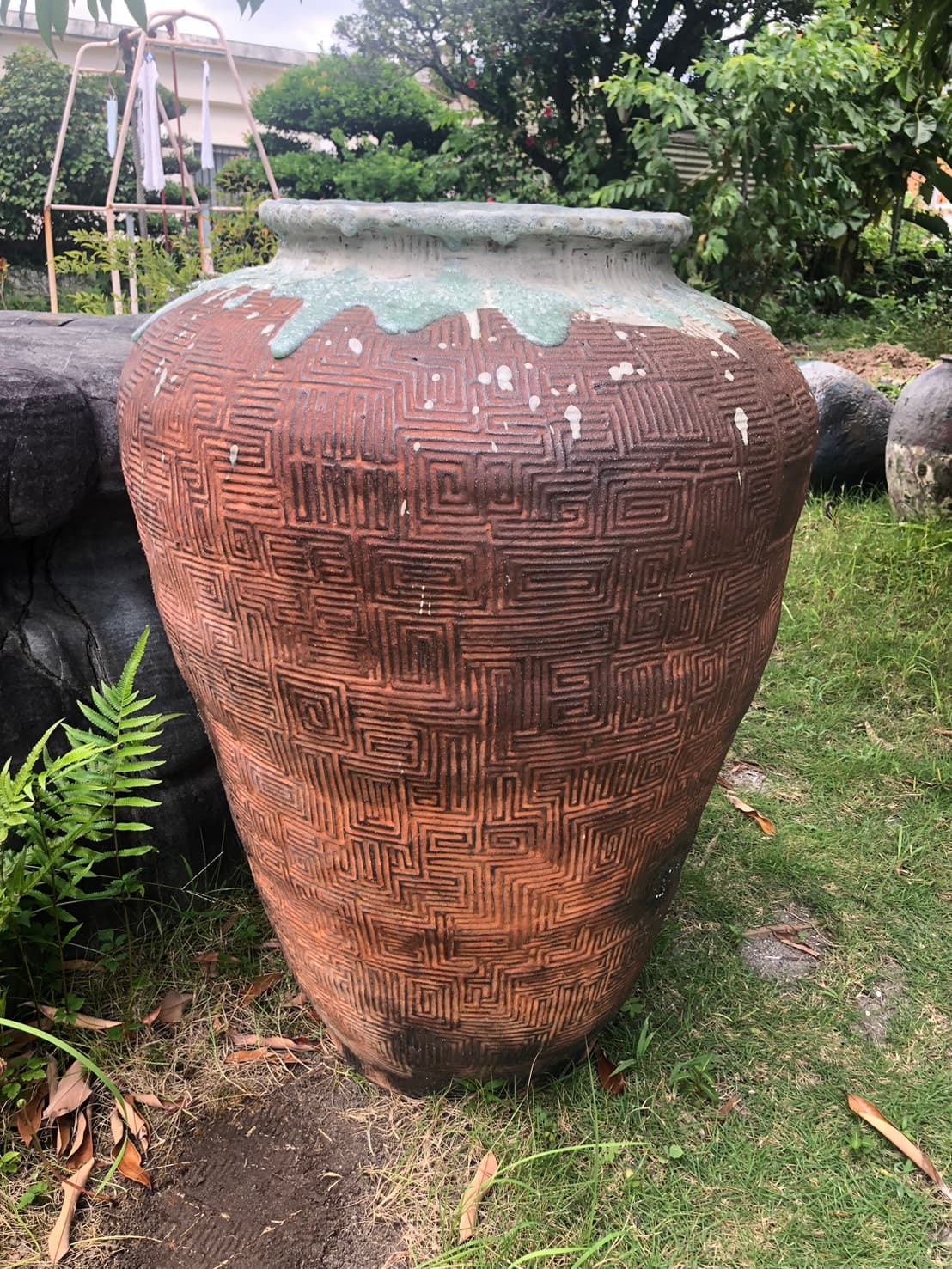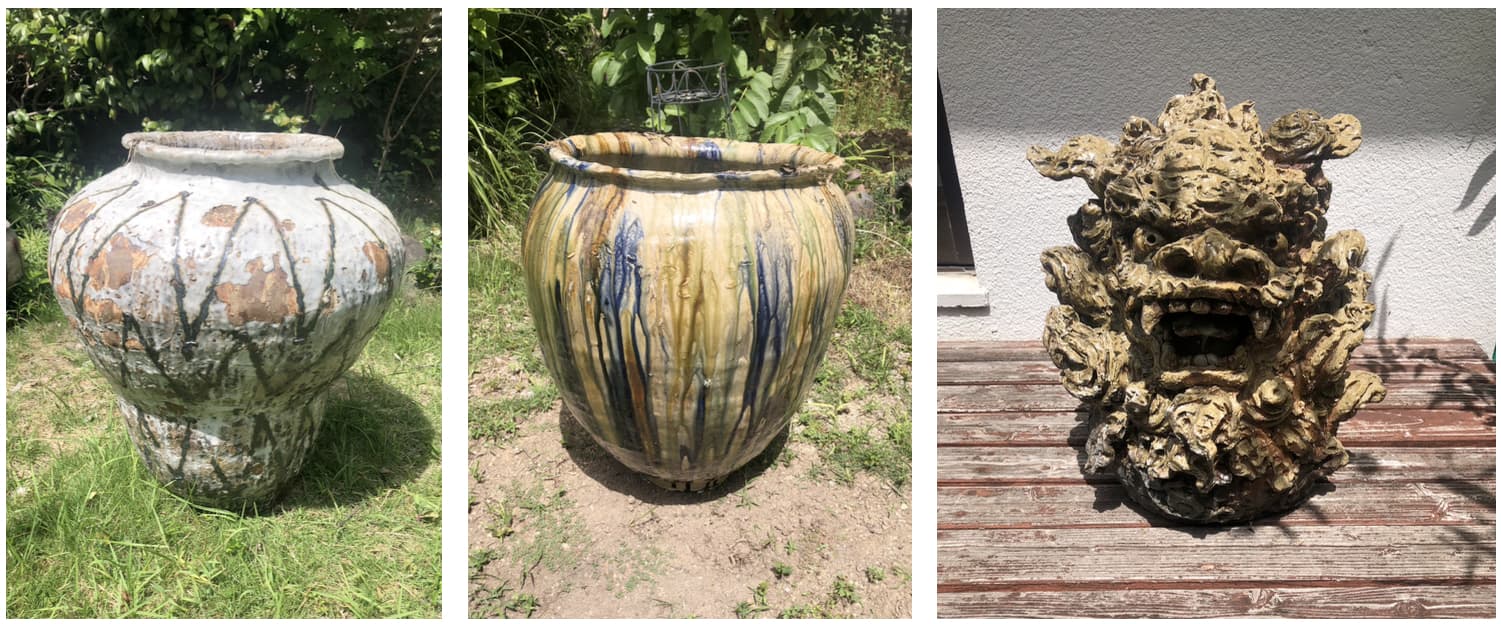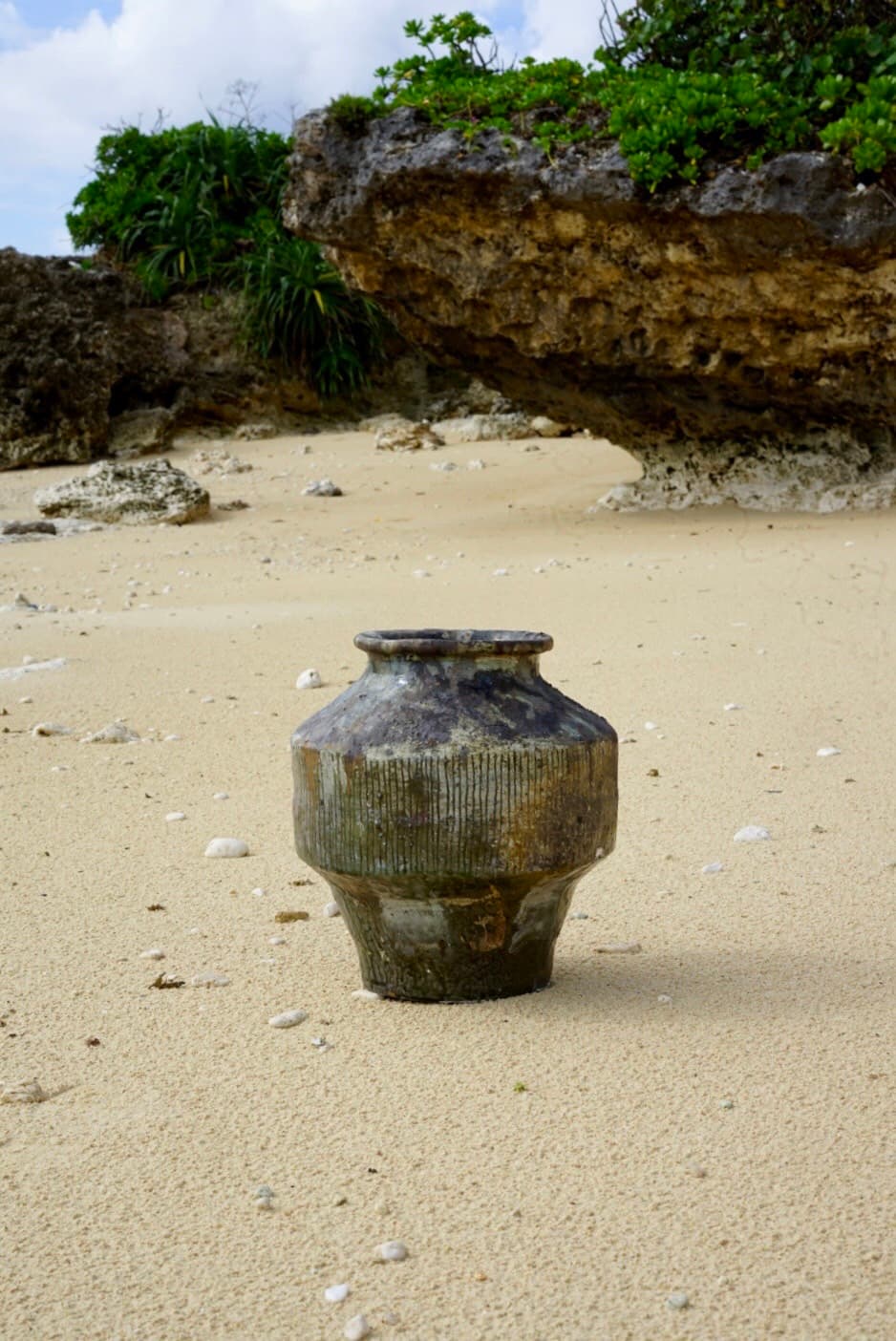About the Exhibition
Kaikai Kiki Gallery is pleased to present “Yuji Toma Yachimun Exhibition,” an exhibition of new ceramic works by Yuji Toma, starting October 4, 2024.
Yuji Toma’s studio is located in Koja, Okinawa, about 50 minutes north of Naha Airport by car. On the way from the airport to his studio are the vast U.S. military base in Ginowan and the traditional Okinawan turtleback tombs, and then, suddenly, his studio appears by the roadside at the foot of the mountains. The workshop is a small space of only about 66 square meters in all, with dirt, bricks, and firewood scattered about at the entrance. Beyond them, you find two types of wood-fired kilns that Toma taught himself to build. When the kilns are fired for production, the surrounding area becomes engulfed in sweat-inducing heat and humidity.
Up until now, Toma has exhibited mainly teacups, karakara decanters, and medium-sized pots in group exhibitions at Kaikai Kiki Gallery, including the “Tsuchitomo no Hakaba” exhibition, the “Tokyo Wild Clay” Tsuchitomo Exhibition, and the “Kuniyoshi Seisho Homage Exhibition”. For this solo exhibition, he is challenging himself to create large works befitting the space of Kaikai Kiki Gallery, and he will be firing them until just before the opening. Yuji Toma has become a very popular artist, with visitors lining up to see his works in particular at group exhibitions. We hope that you will come see his spirited works with your own eyes.


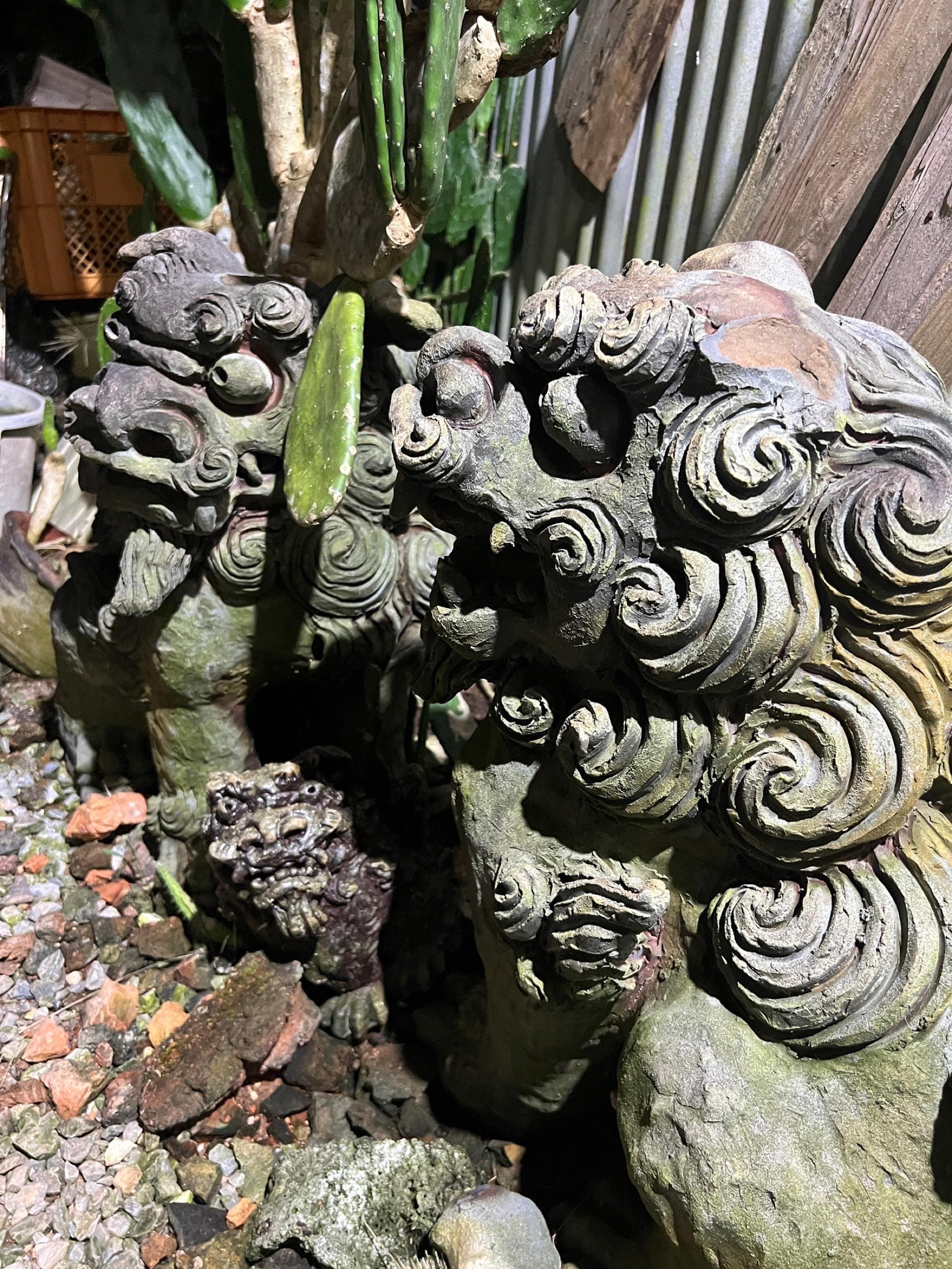
Message from the Artist
I make pottery in Okinawa.
Pottery, “yakimono” in Japanese, is called “yachimun” in the Okinawan dialect.
I started working part-time for my uncle, a Shisa artisan, when I was 18 years old, kneading clay and pressing molds, and came to highly enjoy making Shisas.
Just like ice melting into water, the ash [glaze] melts when fired, and I became fascinated with yachimun because of the interesting changes it undergoes in the process of production.
I wanted to try firing with wood, so I built an anagama kiln.
At that time, my only desire was to fire my works with wood, so I solely relied on my imagination to convince myself that I could do it well. I dug soil and made clay, filled the kiln, and fired as best I could, but the kiln refused to achieve high temperature.
I was very excited when the temperature finally rose sufficiently for the first time and I saw the teacups melted and collapsed.
I was truly happy.
I want to fire interesting yachimun.
So I will call this exhibition “Yuji Toma Yachimun Exhibition”.
Thank you.
Yuji Toma
Comment from Takashi Murakami
For those of you who are fans of ceramic art, this is the long-awaited full-scale solo exhibition of Yuji Toma’s works at Kaikai Kiki Gallery.
After finishing his solo exhibition at tonoto on October 18, 2020, Toma has devoted himself to creating Okinawan yachimun (pottery, “yakimono” in Japanese, is called “yachimun” in Okinawa) for this exhibition at Kaikai Kiki Gallery.
I have already written about my encounter with this artist on various platforms, but it all started in the spring of 2021, when I visited the pottery store tonoto in Kyoto in the midst of the pandemic. Separately from the works of the artists I had gone to see, tonoto’s owner, Mr. Take, had Toma’s works ready in a small room and brought me face to face with them.
The works looked to me like dirty black masses and I wondered why he was introducing them to me, but he told me that Toma was an artist he firmly stood by. I asked him when he had held the artist’s solo exhibition, and he said just the other day. I got the impression that the works weren’t selling at all, so I asked, “Oh, so they didn’t sell?” to which he replied, “No.” Since it was early in the pandemic at that time, I thought that his store might be struggling financially, and purchased a good number of Toma’s work and went home.
Although I made the purchase, I didn’t even break the seals of the packages and forgot about them for several months after they were sent to me. One day, a Kaikai Kiki staff who manages the ceramics asked me if he could open the packages, so we finally opened them. I looked at the pieces one by one, and thought “What is this, they are black! Charred! Heavy!”… and I confirmed to myself that I didn’t particularly like them. I decided to try drinking sencha in them, so I took three or four pieces back to my room, made some tea, and used the cups to drink it. To my surprise, I experienced an extremely erotic sensation when my lips and tongue met the cups―something I had never felt before. I immediately called Take and said, “This artist is amazing.” He then told me that the artist was introduced to him by another ceramic artist Shiro Shimizu, and I didn’t quite understand how Shimizu had come to know Toma, as my interest moved on to Shimizu. Later, Naoki Wada, the founder of the group “Tsuchitomo”, explained to me that he himself had visited Okinawa to follow Seisho Kuniyoshi’s footsteps, and he came to regard Toma as the second coming of Kuniyoshi upon discovering his works at an antique district. Wada then passed this discovery on to Shimizu, who in turn passed it on to Take, of tonoto, and that was how his work reached me. (There is much more to the story beyond this, but I won’t go into it in this essay.)
On August 24 and 25, 2024, Naoki Wada, Yuji Toma, and other artists held an exhibition at Kaikai Kiki Gallery in tribute to Seisho Kuniyoshi. I wanted to explore the essence of Okinawan ceramics = yachimun, rather than treating yachimun as mere souvenirs.
I fell in love with ceramics through the context of lifestyle crafts, and I traveled all over Japan during the pandemic with Yasuharu Sugano of Kogei Seika and held events and engaged in conversations with the people at the core of lifestyle crafts. Yet I was still unsure of the root of the concept, and was left with some vague notions I couldn’t pin down.
Recently, however, I have succeeded in finding its true origin through my own fieldwork, in a completely different context. That is, it was the movement of the Japanese intellectuals in the 1960s and 1970s, from the student movement of Zengakuren (the All-Japan Federation of Students’ Self-Government Associations) to Zenkyōtō (All-Campus Joint Struggle Committee), that was the starting point of lifestyle crafts! In short, after the defeat in the war, Japan had to find its way to self-government and independence through the Security Treaty struggles and such, and from the intellectual gatherings of the student movement emerged artistic groups, including theater troupes such as ‘Mingei’ (The People’s Art Theatre), ‘Kuro no Kai’ (The Black Society), ‘Tenjō Sajiki’ (The Upper Gallery), and ‘Kara Gumi’ (The Kara Troupe). These groups dispersed into different directions, and a large number of theater activists appeared.
One time, Ryuji Mitani was talking to me about lifestyle craft, and one of the episodes he told me went as follows: “I was working in theater, but I had a setback and went on to look for a job and ended up in Nagano Prefecture, where a highway construction project was going on. I started making crafts to sell at a pension house as souvenirs.” At the time, I was just following the historical timeline as I listened, but the most important part about this story is that Ryuji Mitani came from a theater background and went into crafts after giving up on that field.
What, then, came before theater? It was the student movements. In other words, the state of Japan in those days. The key point is that the movement of the young people who entered the era of upheaval also streamed into the fields of ceramics and crafts. (This is really what I discovered on my own through my own fieldwork, so other craft critics should give me a credit, “according to Murakami.” I have always wondered about the morals of the people in the crafts industry, as its artists and critics alike are quick to copy others’ ideas without due credits.)
Okinawan ceramic artist Seisho Kuniyoshi was also influenced by the various nationwide movements Japan, especially his collaboration with Tetsuo Kinjo and Shozo Uehara, the scriptwriters of Ultraman, and with “Kaiyōsen” that Kinjo helped organize. Kuniyoshi is remarkable in connecting the resulting concepts such as the discovery and loss of the identity of Okinawa and the Okinawan people, as well as the relationship between Japan and Okinawa, with ceramic art. Wada in turn was enraptured by this, and that is why he ended up going to Okinawa to follow the footsteps of Kuniyoshi—and in doing so, came across Toma’s works. It is a very convoluted story, and I did not readily understand why I found Toma so interesting, but I now know what is fascinating about him: It is the context of the indescribable and unaccountable resentment and the rebellious spirit of the young people in Japan since the time of the student movement, on top of the fact that his art matured in Okinawa.
All that aside, in my opinion Toma is, in simple terms, a very unskilled potter. Nowadays, his works finally stopped leaking water and they maintain their intended shapes, but he is only able to achieve the desired colors or concepts in small guinomi sake cups or yunomi teacups, and not yet in larger pieces. In that sense, he is an artist in the process of development. I see great potential in him, and I am willing to bet on him. I have rambled on, but I hope that all of you, ceramic art fans, will pay close attention to him and come to see the exhibition.
I am sorry to say that this exhibition is different in format from other shows in the ceramic art industry in that we have a preview system that allows Kaikai Kiki patrons to enter the exhibition in advance, so we ask for your understanding that some of the best pieces may be unavailable at the time of the opening, even if you wait in line for it. But with that in mind, please do come visit.
Takashi Murakami
Owner of Kaikai Kiki Gallery
Yuji Toma
Born in 1986 in Gushigawa City (now Uruma City), Okinawa Prefecture. In his final year of high school, he began helping his uncle, a master potter and Shisa maker, and learned the art of modeling. In 2008, he won the Urasoe Mayor’s Prize at the 60th Oki Exhibition, and in 2017, he won the 69th Oki Exhibition’s Oki Exhibition Prize for his powerful ceramic work “Wind God and Thunder God”.
Recent exhibitions include “Kuniyoshi Seisho Homage Exhibition” (Kaikai Kiki Gallery, 2024), “Tokyo Wild Clay” Tsuchitomo Exhibition (Kaikai Kiki Gallery, 2024), “Tsuchitomo no Hakaba” (Kaikai Kiki Gallery, 2023), “Yuji Toma: Sometsuke” (Tonoto, 2023), “Dokonjōyaki: Naoki Wada & Yuji Toma” (Gallery Lafayette, 2021), “Yuji Toma: Aku” (Tonoto, 2020).
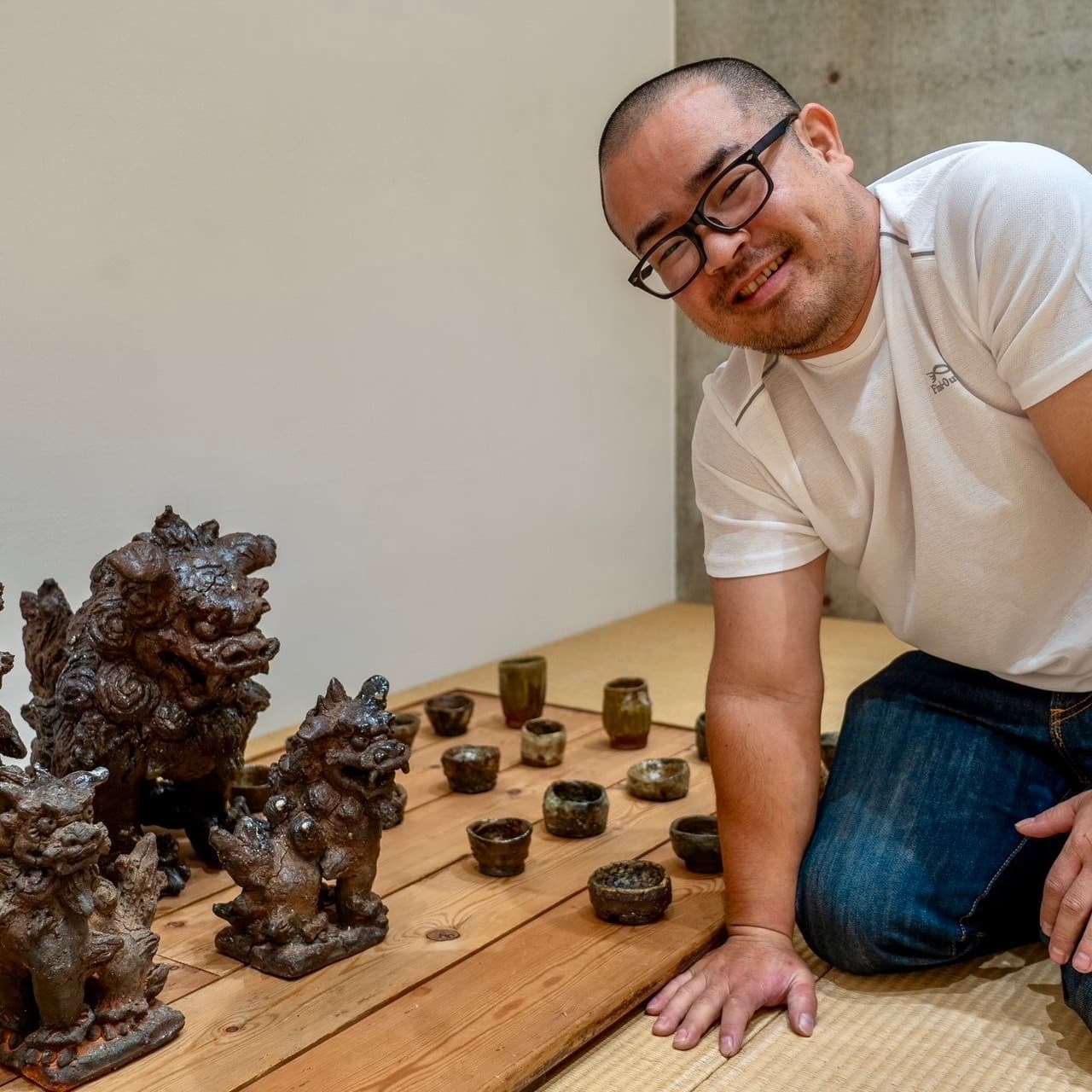
Event Overview
Yuji Toma Solo Exhibition
”Yuji Toma Yachimun Exhibition”
October 4, 2024 (Fri) – October 16, 2024 (Wed)
11:00 AM – 7:00 PM
Closed: Mondays and Tuesdays
Kaikai Kiki Gallery
Crest Building B1F, 2-3-30 Motoazabu, Minato-ku, Tokyo, 106-0046
